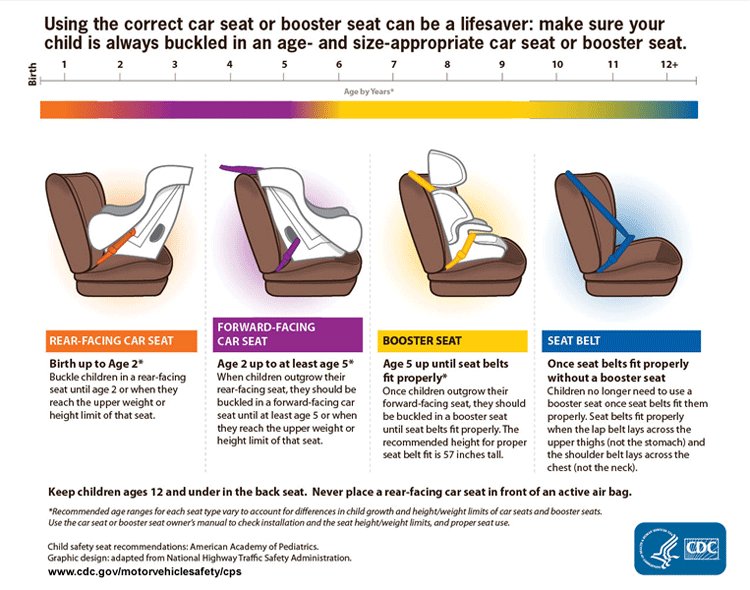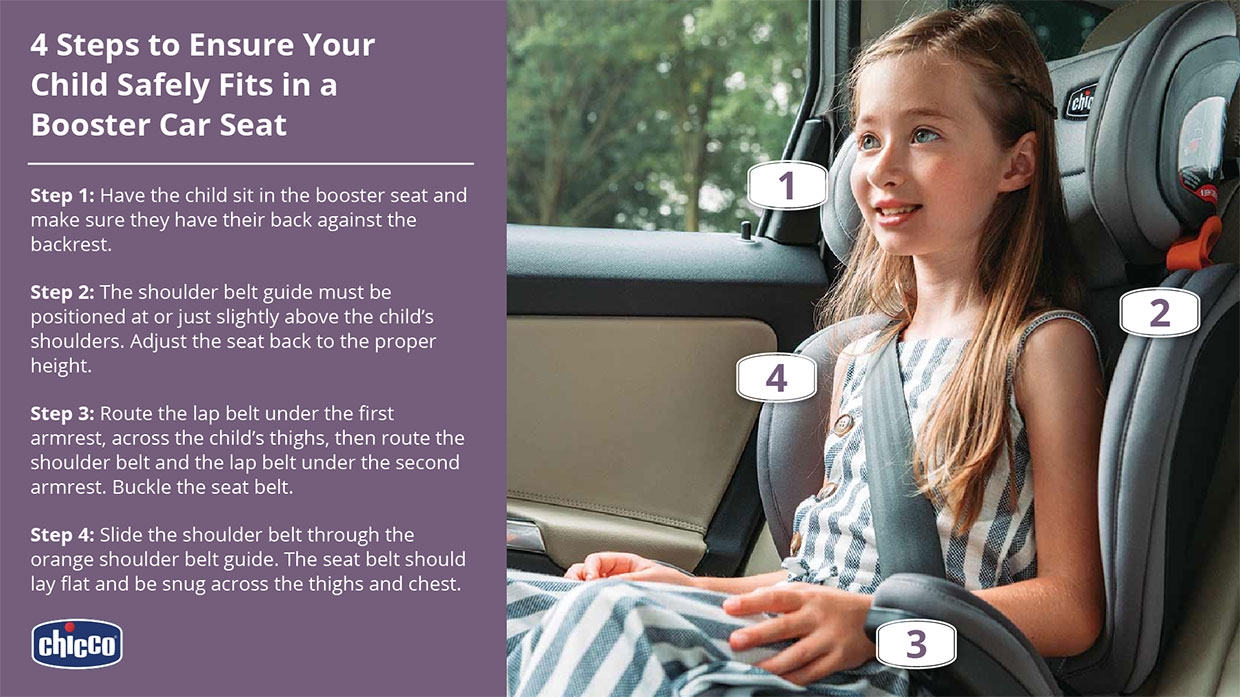
As a parent, I constantly find myself worrying about my child’s safety, especially when it comes to traveling in the car. One question that kept nagging me was: Is it safe for my child to use a booster seat in the front seat of the car? At first, I didn’t think much about where my child sat as long as they were buckled in. But after doing some research and consulting experts, my view changed drastically. If you're asking the same question, let me walk you through what I discovered.
When I Thought It Was Okay: My Personal Misconception
Before diving into research, I had a naive confidence that my child was safe wherever they sat as long as the booster seat was buckled in correctly. My justification? Convenience. It was easier to keep an eye on them or hand over snacks from the driver’s seat. But I learned quickly that convenience shouldn’t outweigh safety.
What Changed My Perspective
A conversation with a paramedic who’s seen the aftermath of crashes really stuck with me. He said the saddest calls are the ones where children were injured in the front seat—injuries that could have been prevented.
That hit me hard. If keeping my child in the back seat could potentially save their life, why take the risk?
Common Mistakes I Made with Booster Seats in the Front Seat of the Car
When I did let my child ride in the front (before I knew better), I made some common mistakes:
- I didn’t check if the seatbelt was positioned correctly.
- I never considered the airbag a threat.
- I prioritized ease over safety.
Looking back, I’m thankful that nothing bad happened, but I shudder to think of what could have gone wrong.

Understanding the Risks: Is it Safe for My Child to Use a Booster Seat in the Front Seat of the Car?
I used to think that since booster seats are designed for safety, using one in the front seat should be fine. However, what I didn't realize is that the front seat presents a whole different set of risks for children. The biggest concern? Airbags.
Airbags are designed to protect adults in crashes, but they deploy with such force that they can seriously injure or even kill a child in a booster seat. This alone made me reconsider my seating arrangement. Children in booster seats are not tall enough or heavy enough to handle the impact of an airbag, especially in the front seat.
Additionally, booster seats rely on lap-and-shoulder belts being positioned correctly. When the car seat itself is positioned differently in the front seat—often higher or with more slope—it can compromise how the seatbelt sits on your child.
What Experts Say About Booster Seats in the Front Seat of the Car
So, is it safe for my child to use a booster seat in the front seat of the car? According to the American Academy of Pediatrics (AAP), children under 13 should always ride in the back seat. The back seat is significantly safer in the event of a crash. Booster seats are designed to elevate a child so that the seatbelt fits properly—but only in situations where the surrounding environment is also designed for their safety.
The National Highway Traffic Safety Administration (NHTSA) also echoes this guidance. They state that the back seat is the safest place for children because it's farthest from the impact of frontal crashes and side collisions.
Legal Guidelines: Is it Safe for My Child to Use a Booster Seat in the Front Seat of the Car?
Laws vary by state and country, but many jurisdictions enforce rear-seat-only laws for children up to a certain age or weight. In my area, children under 12 must ride in the back seat, and there are strict booster seat laws to ensure correct usage.
In some regions, violators may face fines or other penalties, even if no accident occurs. It’s worth checking your local child passenger safety laws to ensure you're not only keeping your child safe but also complying with regulations.
Anatomy of a Crash: Why the Back Seat is Safer
Here’s what changed my mind completely. I watched a simulation video showing the impact of a crash from the front seat versus the back. The force of the airbags alone was enough to injure a child. Plus, during frontal collisions (the most common type), the front seat bears the brunt of the impact.
The back seat not only provides a buffer zone but also minimizes the direct line of impact in most types of collisions. When restrained properly in a booster seat in the back, children have a much higher survival and injury-prevention rate.
What If You Have No Choice?
Of course, there are exceptions. I have a friend who drives a single-cab truck with no back seat. In cases like this, there are precautions you can take:
- Turn off the airbag, if your vehicle allows it.
- Push the seat as far back as possible.
- Ensure proper booster seat installation.
Additionally, keep in mind that not all booster seats are designed the same. Some high-back boosters offer more side-impact protection, which may slightly mitigate risk in these limited cases.
Still, the experts agree: these are last-resort measures, not alternatives to using the back seat.
Airbag Myths and Facts: Is it Safe for My Child to Use a Booster Seat in the Front Seat of the Car?
One myth I believed was that airbags could be disabled automatically when a child was detected. That may be true for newer models, but not all cars have this technology. In fact, my vehicle didn’t. Another myth? That booster seats offer the same level of protection regardless of seating position. They don’t.
The reality is that airbag deployment combined with incorrect booster seat placement can be a deadly combo. Even an adult can be severely injured by an airbag when seated too close—for a child, the results can be catastrophic.
Age and Size Matters
If you’re still wondering, is it safe for my child to use a booster seat in the front seat of the car? here’s a practical tip: gauge their maturity and size. Children should be at least 13 years old and large enough for the seatbelt to fit properly without a booster before moving to the front.
A properly fitting seatbelt should lie across the upper thighs, not the stomach, and the shoulder belt should cross the chest and shoulder without cutting into the neck. If it doesn’t, your child likely still needs a booster and definitely should be riding in the back.
Practical Parenting Tips for Safer Rides
Here are a few tips I now live by:
- Always do a seatbelt check before driving off.
- Teach your child why the back seat is safer. This helps them understand safety over comfort.
- Use accessories wisely. Never place thick coats or padding between the seatbelt and your child.
- Set a good example. Buckle up every time, no exceptions.
These simple habits have made car rides feel more secure for me and my child.
Final Thoughts: Is it Safe for My Child to Use a Booster Seat in the Front Seat of the Car?
The short answer is no, it’s not safe, unless there is absolutely no other option. Booster seats are tools for safety, but only when used in the right conditions. The front seat simply adds too many uncontrollable variables, especially with airbag deployment risks.
As a mom, I now always double-check that my child is securely buckled in the back. Peace of mind isn’t just a feeling—it’s knowing I’ve done everything I can to keep my child safe.

Product Review Conclusion: Is it Safe for My Child to Use a Booster Seat in the Front Seat of the Car?
After all my research and real-life experiences, my final verdict is this: booster seats should only be used in the front seat as a last resort. The back seat is significantly safer and recommended by safety experts, pediatricians, and paramedics alike.
If you absolutely must use a booster seat in the front seat, follow these steps:
- Disable the airbag if possible.
- Push the front seat as far back as it goes.
- Ensure your child meets the weight and height requirements.
- Double-check seatbelt placement.
- Consider a high-back booster for added protection.
But again, these are not ideal circumstances. Safety always comes first, and that means using the booster seat in the back whenever possible.
I hope this helps other parents who, like me, just want to do what's best for their children. Stay informed, stay cautious, and most importantly—stay safe out there!
Frequently Asked Questions
Q: At what age can a child legally sit in the front seat with a booster seat?A: Laws vary by location, but most experts recommend waiting until a child is at least 13 years old, regardless of whether a booster is used.
Q: Can I place a rear-facing car seat in the front seat?A: No. Rear-facing car seats should never be used in the front seat with an active airbag. It can result in serious injury or death.
Q: What if my car doesn’t have a back seat?A: If the front seat is your only option, disable the airbag and move the seat as far back as possible. Ensure proper seatbelt and booster seat installation.
Q: Do all cars allow the airbag to be turned off?A: No. Some vehicles, especially older models, don’t offer this feature. Always consult your owner’s manual.
Q: Is a high-back booster safer than a backless one?A: Yes, especially in side-impact crashes. High-back boosters offer better head and neck support.
Q: How do I know when my child is ready to stop using a booster seat?A: When the seatbelt fits properly without the booster: lap belt across thighs and shoulder belt across chest and shoulder.
Q: Are there penalties for putting a child in the front seat inappropriately?A: Yes. You can be fined or face legal consequences if you violate child passenger safety laws.
Q: What makes the back seat safer than the front?A: It provides a buffer from impact zones, avoids airbag risks, and statistically results in fewer injuries during crashes.
Q: Should I worry about long trips if my child is in the back seat?A: Not at all. The back seat is the safest place, even for long distances. Bring entertainment to keep your child comfortable and happy.
Q: Can airbags be dangerous even for older children?A: Yes. Children under 13 are still developing and may not be able to handle the force of airbag deployment safely.
